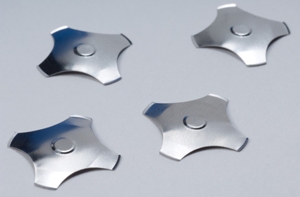I am toying around with some new mechanical design ideas. One thing I've never looked at it is the rubber keypads with the conductive "pucks" underneath. I've always used mechanical switches, or overmolded silicone buttons onto the finished enclosure for waterproofing.
Example of the conductive rubber keypads: http://www.rubber-keypad.com/Conductive-Keypad-pd6229345.html
I take it the manufacturer gives you a footprint that matches the conductive "puck", and the footprint goes to GND so when the puck hits, your logic line goes low.
Does anyone have any experience implementing these? Are there any gotchas or things to watch out for?
Any experience on the cost side?


